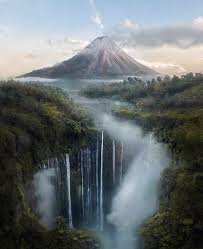When we walk on the earth, we often take for granted the complex processes happening beneath our feet. The earth’s crust, rich with geological mysteries, plays a crucial role in shaping the surface we live on. From the seismic movements that form mountains to the molten lava that creates volcanic islands, the forces below are both powerful and awe-inspiring. In this article, we’ll dive deep into the geological marvels beneath the earth’s surface, uncovering the secrets that lie hidden beneath our feet.
What is Geology and Why Does it Matter?
Geology is the study of the Earth’s structure, composition, and the processes that have shaped it over millions of years. Understanding geology allows us to appreciate the dynamic forces at play beneath the surface, from tectonic plate movements to the erosion that carves out valleys and canyons.
For centuries, geologists have used a combination of observation, rock sampling, and advanced technology to study the earth’s interior. Their findings not only help us understand natural phenomena like earthquakes, volcanoes, and landslides but also assist in resource management, environmental conservation, and disaster preparedness.
The Earth’s Layers: A Look Inside
The earth is made up of several layers, each with distinct characteristics. These layers are crucial in understanding geological mysteries, as they reveal the earth’s history and the forces that continue to shape its surface.
- Crust
The earth’s outermost layer, consisting of solid rock. It’s relatively thin compared to other layers and forms the continents and ocean floors.
- Mantle
Beneath the crust lies the mantle, a semi-solid layer of rock that flows slowly due to heat. The mantle is responsible for the movement of tectonic plates and volcanic activity.
- Outer Core
The outer core is made of liquid iron and nickel. It plays a key role in generating the earth’s magnetic field.
- Inner Core
The innermost part of the earth, composed of solid iron and nickel. Despite being extremely hot, the inner core remains solid due to immense pressure.
Tectonic Plates and Their Role in Shaping Earth’s Surface
One of the most fascinating geological mysteries is the movement of tectonic plates. The Earth’s outer shell is divided into several massive slabs of rock called tectonic plates. These plates float on the semi-fluid mantle and constantly move, albeit very slowly, over millions of years. This movement is responsible for many geological events and features, including:
- Earthquakes
When tectonic plates slide against each other, they can cause sudden, powerful shifts in the earth’s surface, resulting in earthquakes.
- Mountains
When two plates collide, they can push the earth’s crust upward, forming mountain ranges like the Himalayas.
- Volcanoes
When one plate sinks beneath another in a process known as subduction, magma from the mantle can escape to the surface, creating volcanic eruptions.
The Importance of Geological Exploration
Understanding the mysteries of the earth beneath our feet is not only crucial for scientific discovery, but it also has practical applications. Geological exploration helps us locate valuable natural resources, such as **oil, gas, and minerals**. It also provides critical information for natural disaster prediction and environmental protection.
By studying the geological processes that shape our world, we can better prepare for events like earthquakes, volcanic eruptions, and floods. It also allows us to understand the long-term impacts of climate change and how it might alter the earth’s surface in the future.
